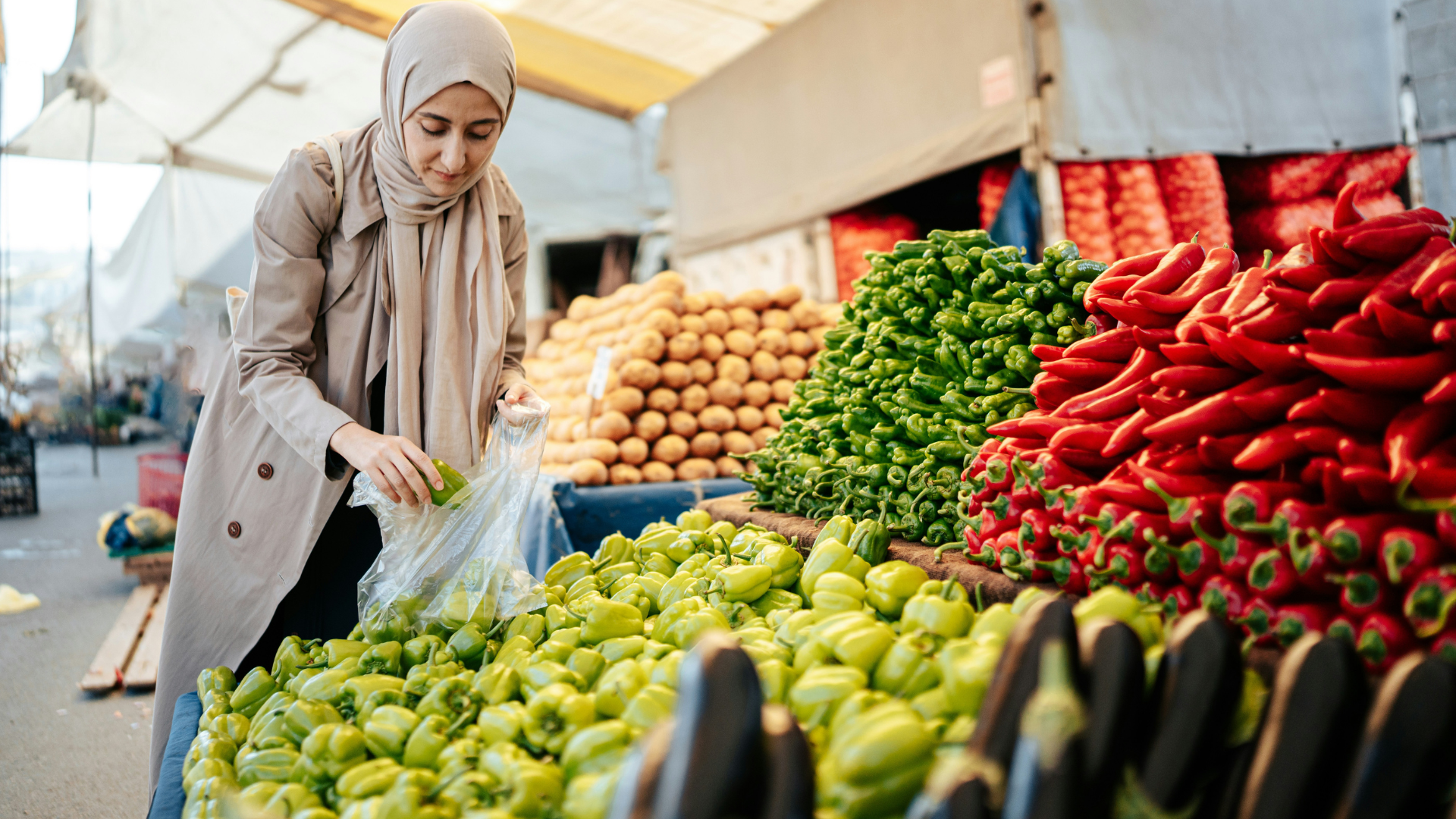5 Easy Ways to Save on Groceries
Forbright Bank customers share their favorite ways to save money and eat well.
Share:

In an unpredictable economy, it’s a good idea to save money when possible. And your regular food purchases may be one of the easiest areas to find some extra cash.
The average American household spent 12.9% of their income on food in 2023, the most recent year with data available.
Cutting back on other big-ticket items, such as housing and transportation, can be difficult. But if you want to save money, there are several strategies you can undertake to save on groceries—and saving small amounts on frequently purchased items can result in big savings over time.
Start Earning Today
Earn for your future with a bank supporting a brighter future for all.
In response to Forbright Bank’s recent customer survey, Growth Savings customers shared their top tips for saving on groceries. Here’s a look at how they’re eating well without breaking the bank.
1. Prioritize home cooked meals
Sixty-six percent of survey respondents say they cook at home and avoid dining out to save money on food.
Cooking at home is typically cheaper on a per-meal basis than dining out, and it also may allow for leftovers that can stretch one meal into several. Dawn L., a Growth Savings customer, says she saves money by “eating leftovers for lunch or packing lunch every day.”
Research from Civic Science shows a growing trend toward at-home dinner dates, with 35% of respondents saying they are going out to dinner on dates less often in 2025 than they did in 2024. More than one in four dating adults (26%) say they have replaced some dinner outings with at-home date nights. A fancy dinner at home can be less expensive than at a fancy restaurant, and it can result in a new culinary experience with you and your significant other.
“Create a grocery list and try to stick to it.”
Deena L., Growth Savings customer
2. Buy groceries in bulk
When purchasing groceries, 40% of survey respondents buy in bulk to save money. Adam W. says he buys in bulk when possible “to reduce packaging and multiple trips.”
Buying in bulk may mean shopping at a wholesale club or simply stocking up on items when they’re on sale. The cost per unit or per ounce is typically cheaper on larger volume purchases because these items require less packaging.
“I have a chest freezer to store expensive goods when on sale,” says El, a Growth Savings customer. For example, when meat is marked down, you may be able to save 20% or more. Many stores discount meat the day before they receive new shipments each week. If you ask when their meat shipments arrive, you can keep track of which days you may be able to find meat on sale. If you have freezer space available, you can purchase meats, breads, and other items that are nearing their sell-by dates and freeze them until you need them.
3. Shop seasonally
Almost one-third (30%) of respondents to the Growth Savings survey said they save on food costs by shopping seasonally. Buying foods that are in season can create savings because there’s usually a large supply of in-season foods, which drives down costs. Eating seasonal foods also can be better for the environment, as it’s easier to eat locally grown foods in season, reducing the need to transport foods long distances.
One easy way to shop seasonally is to purchase food at farmers markets, and 22% of survey respondents say they do this when possible. Growth Savings customer Jenna M. says she goes “to the farmers market and local co-ops first to buy seasonally, then plans meals around those purchases.”
On average, when a U.S. consumer spends $1 on domestically produced food, 26 cents goes to the wholesale or retail establishment, 2.5 cents goes to the packaging, and 13.2 cents covers food processing, according to the USDA. By purchasing foods directly from farmers or other producers, you can cut many of these costs.
“Shop the sales at multiple stores.”
Gary A., Growth Savings customer
4. Create meal plans
If you’ve ever been grocery shopping without a list, you’ve likely fallen into the trap of purchasing a lot of items you didn’t need. One way to avoid that is to create a weekly meal plan and accompanying shopping list, and 28% of survey respondents do just that.
“I create a grocery list and try to stick to it,” says Growth Savings customer Deena L.
Creating a meal plan and sticking to a grocery list doesn’t just help you save money; it can also help you avoid waste. Owen R., another Growth Savings customer, says he has “stopped stocking up in order to avoid waste from spoilage.”
5. Take advantage of discounts
Finding ways to purchase food at a discount is another popular method for cutting costs. Among survey respondents, 24% buy generic brands to save money when grocery shopping.
Other ways to get discounts include “using apps and rewards points,” says Chelsea H., a Growth Savings customer. Many grocery stores offer coupons through their own mobile apps, and some money-saving apps offer discounts and rebates on purchases from a variety of stores.
Staying loyal to one grocery store may not be the best way to save money. “I shop the sales at multiple stores and use coupons,” says Gary A., a Growth Savings customer.
Consider implementing some of these tips to see how much you can save on groceries.
Disclaimer: This article is for general information and education only. It should not be considered financial or tax advice.





